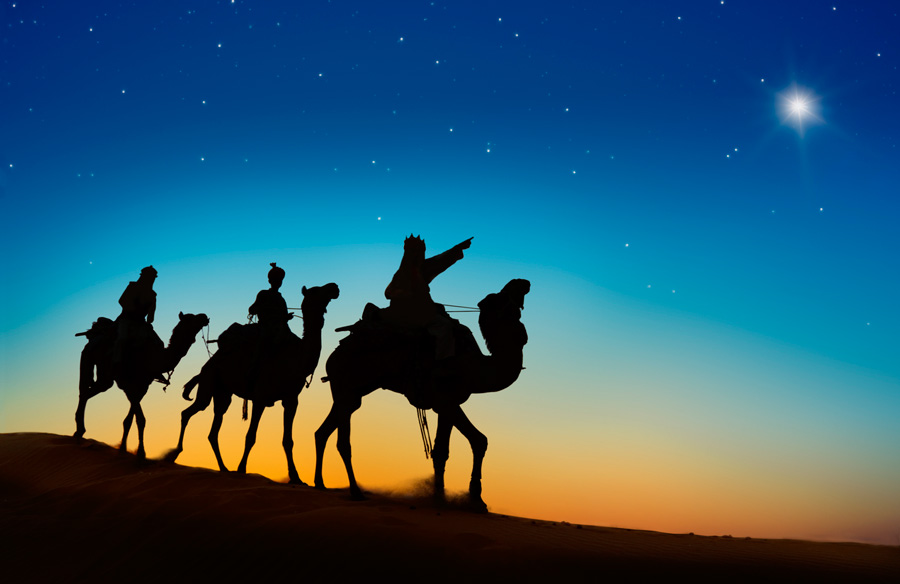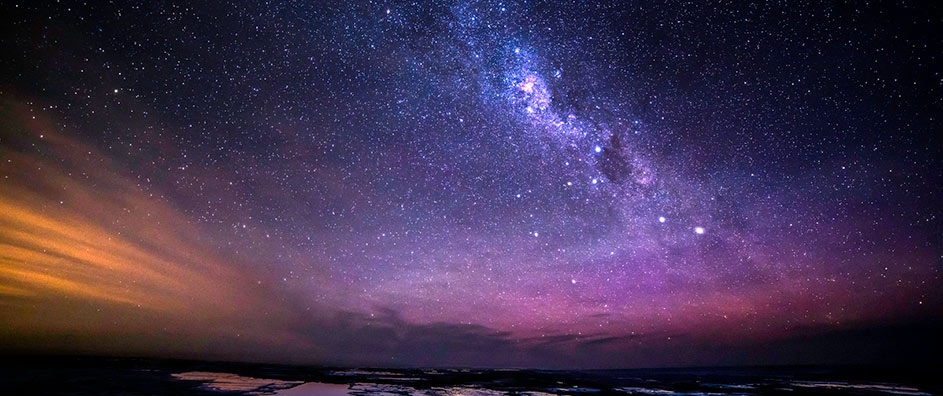The views expressed in our content reflect individual perspectives and do not represent the authoritative views of the Baha'i Faith.
Now that the holiday season has passed, we might want to think about the real reasons it represents such a wonderful occasion for so many people.
Christmas has long been my favorite time. In the weeks leading up to the day Christians commemorate the birth of the baby Jesus—the Christ—I’m always warmed by the thought of Christ’s appearance on Earth. Even after these many centuries, we all recognize the glorious songs of goodwill being broadcast during the Christmas season, the colorful displays of familiar Nativity scenes, and the coming together of families. We celebrate with lights—the symbols of enlightenment, joy and brilliance.
Everyone knows the biblical story of Christ: the mysterious pregnancy of Mary through the Holy Spirit; the journey of Mary and Joseph to Bethlehem in order to register for the census; the birth of Jesus in a crude stable; the shepherds who were guided by an angel to the city of David where they found and worshipped the Christ-child. Who knew then that these events and the journey of the Magi would be depicted annually around the world for thousands of years?
But who were the Wise men, those Magi from the East who had seen an unusual star in the heavens?

Whether the star they followed was a comet, a supernova or a conjunction of planets, these men of learning recognized from their Faith’s prophecies that the star signified the coming of a child whose destiny was to be a special king. That’s why they followed the brilliant star toward Bethlehem. According to tradition, the Magi were Zoroastrian priests. As part of their culture, they would have followed the patterns of the stars.
When the Jewish King Herod heard that this child would be crowned the king of the Jews, he sought out the Magi and asked them to report their findings back to him. Secretly, he feared for his throne and wanted to kill Jesus—yet to the Magi, he said he only wanted to worship the child. When the Magi found Jesus, who by then would have been one or two years of age, they presented him gifts of gold, frankincense and myrrh.
Warned in a dream not to return to Herod, the Magi departed by a different route. Incensed by their clandestine departure, Herod ordered that all boys aged two and younger in the environs of Bethlehem be killed. Meanwhile, Mary and Joseph escaped with their son Jesus to Egypt.
We can see the same pattern in this story attributed to an Egyptian Pharaoh some 1,300 years before the birth of Jesus. The soothsayers, upon seeing a bright star appear in the heavens, warned Pharaoh that a child had been conceived who would alter his fate and the fate of his people. Fearing the loss of his throne to the Hebrew slaves, Pharaoh ordered the drowning of all male infants in the River Nile. Moses escaped death when his mother sent him downriver in a basket. He was discovered by a daughter of the pharaoh and raised in the royal household.
Some 700 years before the coming of Moses, the birth of Abraham was also heralded by a star. The king Nimrod had a disturbing dream. Summoning the soothsayers, he was informed of the appearance of a star in the heavens. As Nimrod knew of the Jewish tradition that the rise of a star signifies the birth of a child who will change the way religion is practiced, he paced to and fro pondering how best to eliminate this child-prophet—but he didn’t succeed.
From these historical accounts, the appearance of brilliant stars as harbingers of divine messengers is clearly very ancient. Abraham’s ancestors–Adam, Seth and Enoch–predicted ways in which heavenly events could be tied to the advent of future Christs. Centuries of observing the heavens for signs of spiritual events would have inspired many to anticipate the appearance of “Christs” (which means anointed ones), down through the ages. Similar stories of stars have come down through Zoroaster and other divine messengers.
Baha’u’llah, the prophet and founder of the Baha’i Faith, said that whenever one of these messengers appears that “signs heralding their advent” will be “revealed in the visible heaven as well as in the invisible:”
…it hath become clear and manifest that before the revelation of each of the Mirrors reflecting the divine Essence, the signs heralding their advent must needs be revealed in the visible heaven as well as in the invisible, wherein is the seat of the sun of knowledge, of the moon of wisdom, and of the stars of understanding and utterance. The sign of the invisible heaven must needs be revealed in the person of that perfect man who, before each Manifestation appeareth, educateth, and prepareth the souls of men for the advent of the divine Luminary, the Light of the unity of God amongst men. – Baha’u’llah, The Book of Certitude, p. 66.
That bright star, of course, symbolizes the light of a new Faith, and the enlightenment of every soul. That’s why the commemoration of such a blessed event marks a very special time for Christians every year. As a Christian having embraced the Baha’i Faith, I celebrate at Christmas time the advents of all the messengers of God.
















Comments
Sign in or create an account
Continue with Googleor